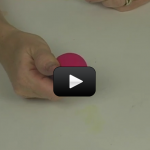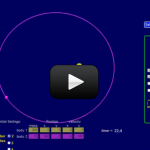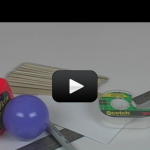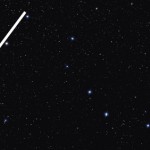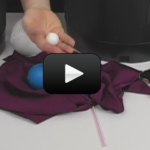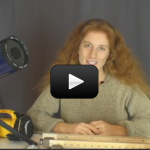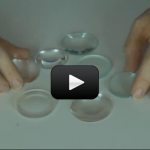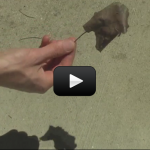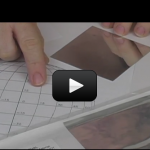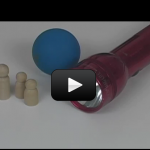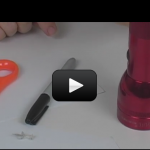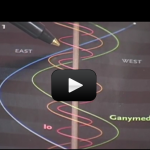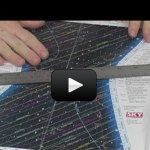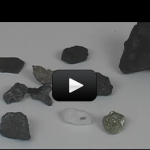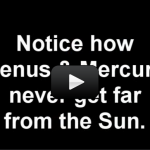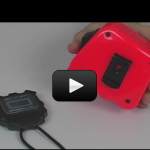Getting Started
Professional astronomers come in two varieties: observational and theoretical.
Professional observational astronomers mostly use expensive scientific instruments to look through their massive telescopes for them. They spend a lot of time measuring things, taking data, and crunching the numbers. They are very good at designing and performing experiments that answer the big questions to which no one knows the answers.
Professional theoretical astronomers think up new ideas and new models for fitting the data so that it makes sense in the field of physics. They are great at asking the big questions in the first place. Albert Einstein was a theoretical astronomer, as he hated to do experiments of any kind. Instead, he preferred to sit back and think about what might happen in the laboratory of his mind.
And then there's the rest of us... like you and me. We're amateur astronomers. Amateur astronomers usually have smaller telescopes, typically 4” to 20” in diameter. They generally don’t get paid to do astronomy. They just do it for the love of it, and they are the ones you’ll find on sidewalks and sharing views of the sky with the general public during local stargazing events. Many amateur astronomers have discovered new objects based on their raw knowledge of the sky.
Are you ready to dive into the exciting world of astronomy? Let's go!
[am4show have='p8;p9;p11;p38;p72;p77;p92;' guest_error='Guest error message' user_error='User error message' ]
Here are the scientific concepts:
- Patterns of the apparent motion of the sun, the moon, and stars in the sky can be observed, described, predicted, and explained with models.
- Earth and its solar system are part of the Milky Way galaxy, which is one of many galaxies in the universe.
- The solar system consists of the sun and a collection of objects, including planets, their moons, and asteroids that are held in orbit around the sun by its gravitational pull on them.
- Know the celestial objects in the solar system and how they relate and interact with each other.
- A model of the solar system can explain eclipses of the sun and the moon.
- Earth’s spin axis is fixed in direction over the short term but tilted relative to its orbit around the sun.
- The seasons are a result of that tilt and are caused by the differential intensity of sunlight on different areas of Earth across the year.
- The number of stars that can be seen through telescopes is dramatically greater than can be seen by the unaided eye.
- How to use astronomical units and light years as measures of distance between the sun, stars, and Earth.
- Black holes are objects where the escape velocity is greater than the speed of light.
- Mass causes spacetime to curve. The amount of curvature depends on how massive the object is and your distance from the massive object.
- Gravitational lensing occurs when black holes and other massive objects bend light.
By the end of the labs in this unit, students will be able to:
- Design an experiment that shown the Earth-sun-moon system and it's cyclic patterns of eclipses, lunar phases, and seasons.
- Illustrate how gravity works in the motions within galaxies and the solar system.
- Analyze and interpret data to determine properties of objects in the solar system.
- Design and build a telescope using optical equipment such as mirrors and lenses.
- Know the celestial objects in the solar system and how they relate and interact with each other.
- Understand how to determine the structure and composition of celestial objects.
- Differentiate observation from inference (interpretation) and know scientists’ explanations come partly from what they observe and partly from how they interpret their observations.
- Measure and estimate the length and volume of objects.
- Formulate and justify predictions based on cause-and-effect relationships.
- Conduct multiple trials to test a prediction and draw conclusions about the relationships between predictions and results.
- Construct and interpret graphs from measurements.
- Follow a set of written instructions for a scientific investigation.
Bonus! Astronomy Math Lab: Distances
Our solar system is so enormous that it’s hard to picture its size using measurements like miles. The Sun is 93 million miles (149 million kilometers) from Earth, while Neptune is nearly 3 billion miles (4.5 billion kilometers) away.
To make it easier to work with, astronomers created a special unit called the Astronomical Unit (AU), where 1 AU equals the distance from Earth to the Sun. Let's practice together calculating the distance to each planet so we can better understand the size of our solar system.
Bonus! Astronomy Math Labs: DSOs
You'll find two labs that will help you understand how math is used in the real world by astronomers to help them figure thing out! Print out the lab handout and follow along, taking notes as I demonstrate each step. ("DSO" = Deep Space Objects)
[/am4show]

